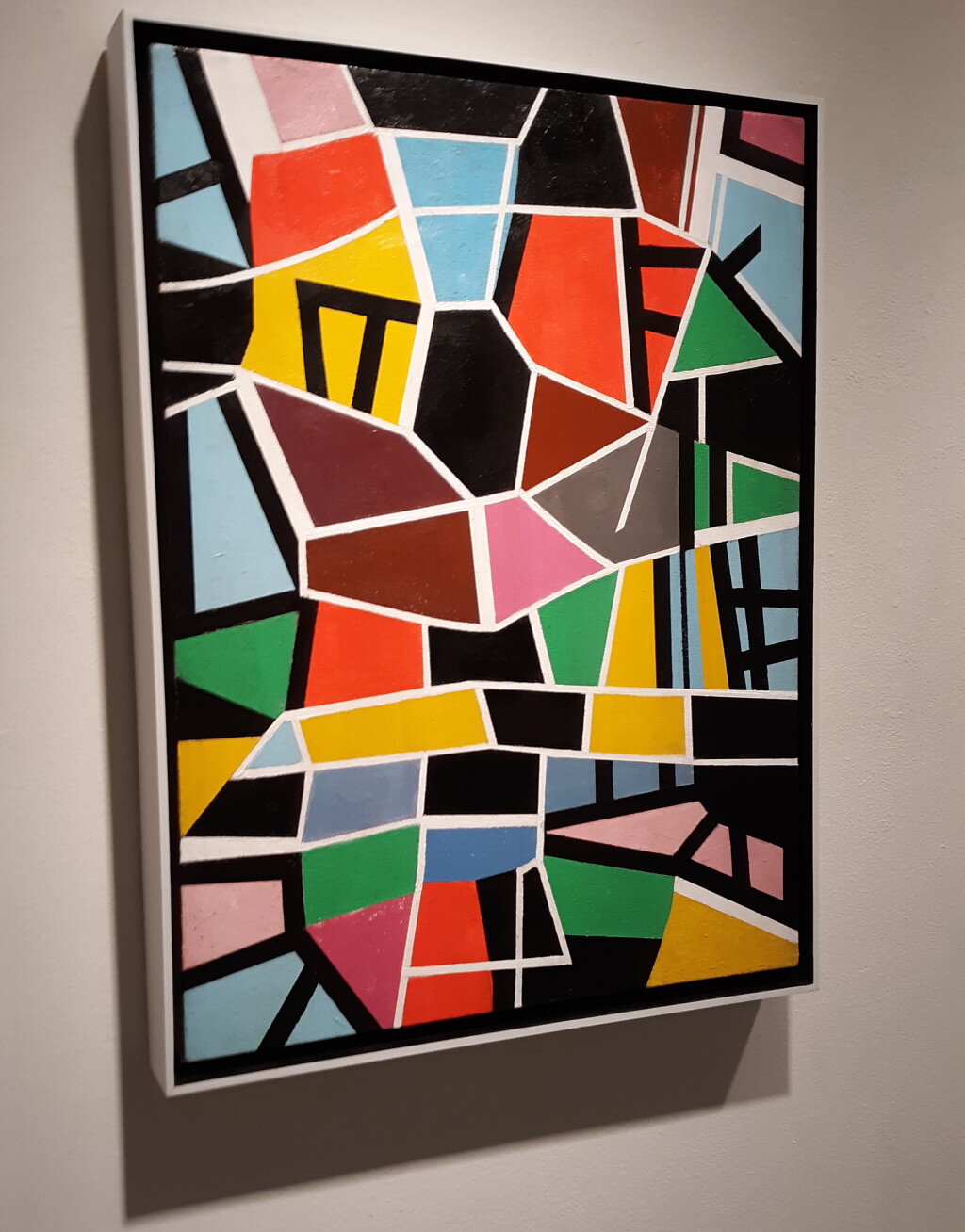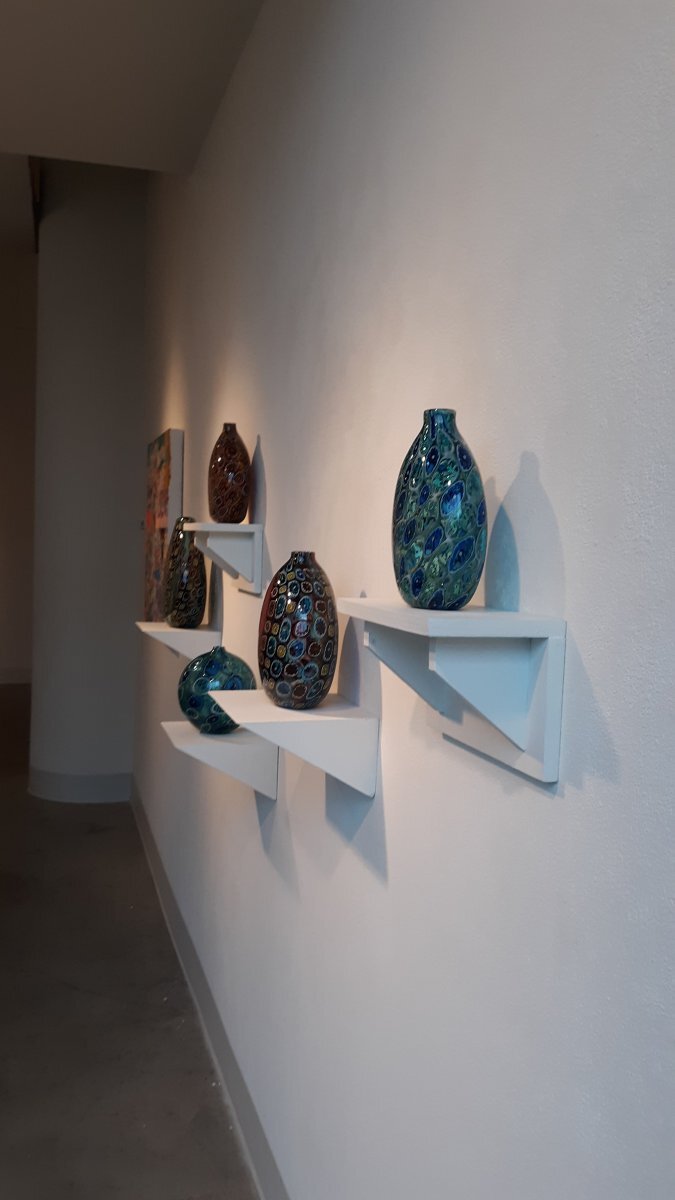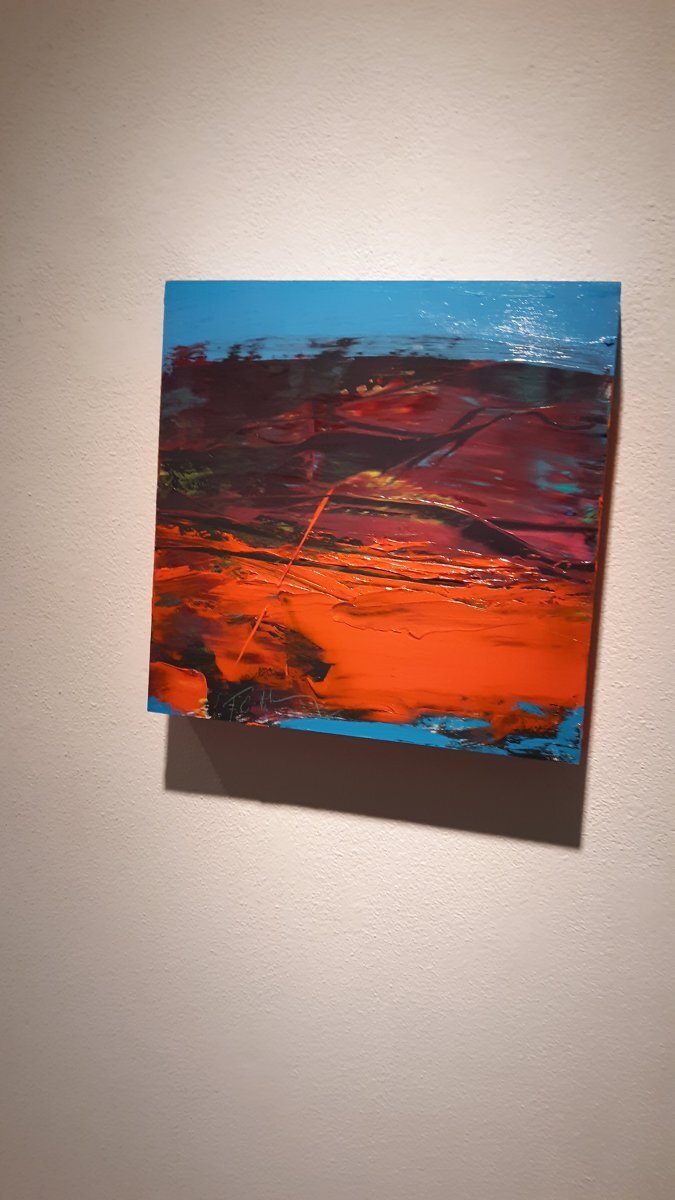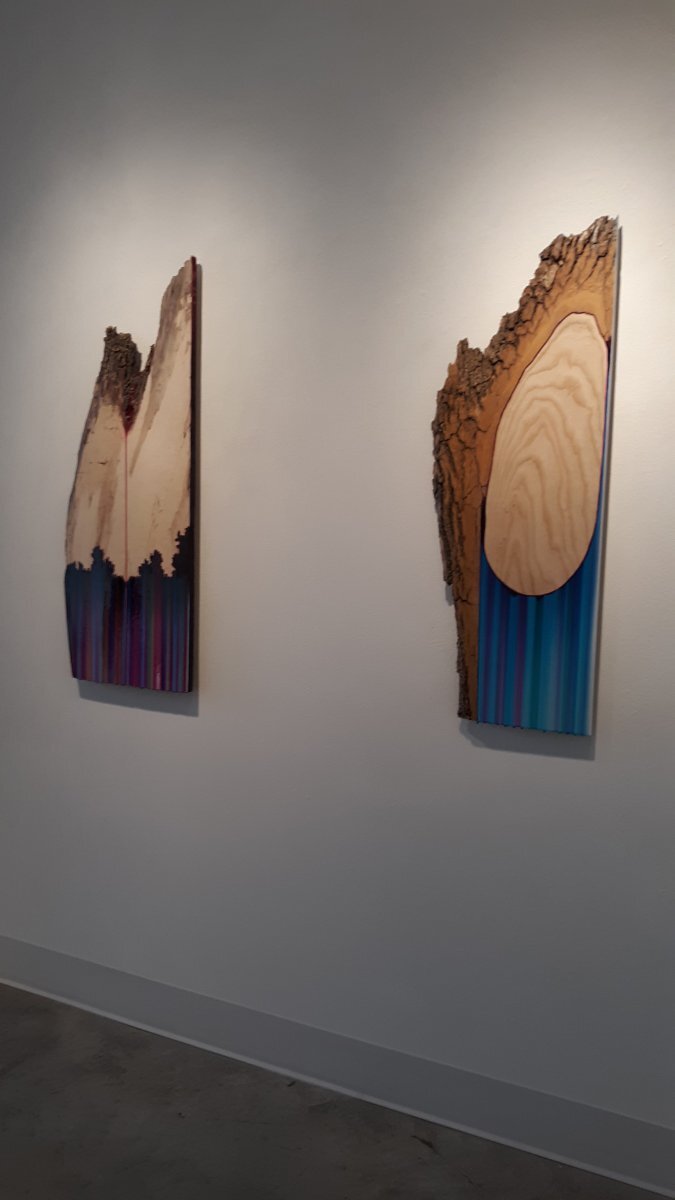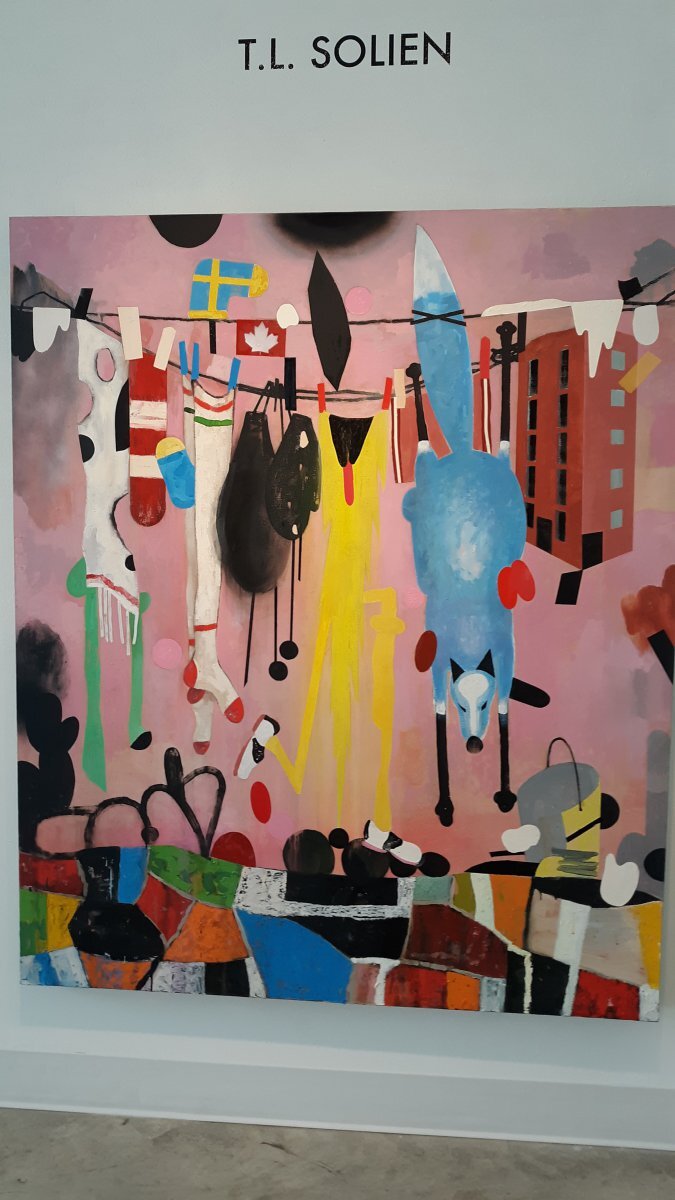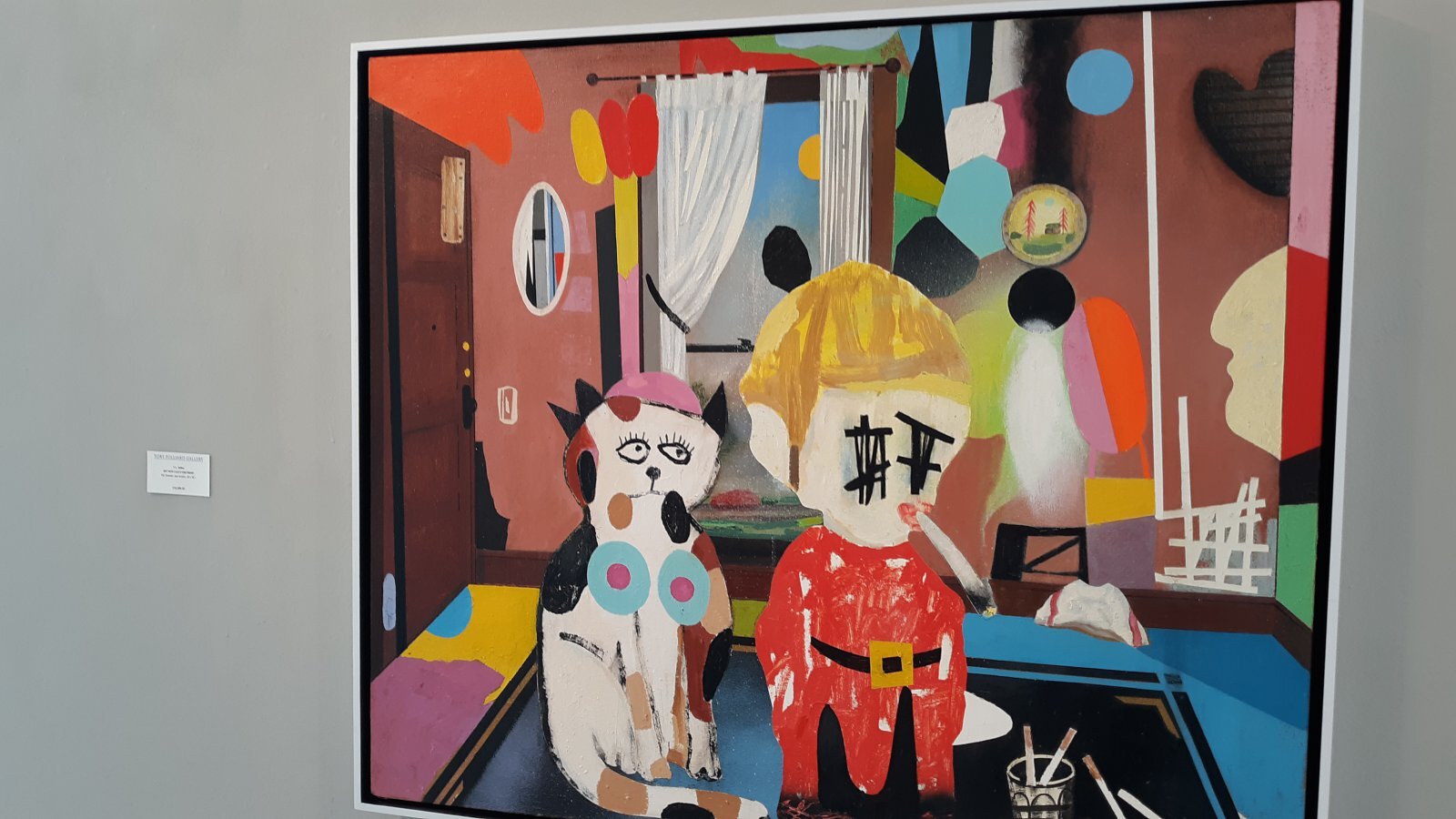Art Review of T.L Solien’s new exhibition Vessels on Vessels / The Specious Landscape. Article written by Shane McAdam’s and published by Shepherd Express
Read MoreMPR: Art Hounds recommend art-based road trips in Minnesota featuring T.L. Solien
*To read the article and listen to the segment on the MPR website, please click HERE
Art Hounds recommend art-based road trips in Minnesota
Emily Bright
June 20, 2021
T.L. Solien, "Wasteland," 2011. Acrylic and enamel on canvas, 78 by 96 inches.
Courtesy of Nemeth Art Center
Visual artists Lisa Bergh and Andrew Nordin of New London, Minn., recently took an art-themed road trip that included a stop at the Nemeth Art Center in Park Rapids, Minn. and the T. L. Solien exhibit “See the Sky.”
Solien’s large scale paintings captivated them. They described the drama of his contemporary work — its humor and pain and emotional charge — as well as his skill with color. “There's actually some subtle moments in some of the smaller pieces that I found myself kind of stuck on,” said Nordin, who was struck by Solien's use of the color yellow.
T.L. Solien, "The Renunciation 2," 2015. Acrylic and enamel on canvas, 72 by 96 inches.
Courtesy of Nemeth Art Center
“I always love going to the Nemeth Art Center,” added Bergh, “You enter into the space through the [Hubbard County] Historical Museum with tons of artifacts, which even made more sense when you walk [up the big stairs] into Solien’s work, because the show is just built on all these artifacts of his personal history of culture.”
T.L. Solien’s show runs through July 17, with a closing reception on July 10 at 4 p.m.
Urban Milwaukee Reviews CHROMA
*To read the original article on the Urban Milwaukee website, please click HERE
Oh So Many Colors
From the CHROMA exhibit. Photo by Catherine Jozwik.
By Catherine Jozwik - Jan 8th, 2020 03:42 pm
The Tory Folliard Gallery’s current exhibition, CHROMA, features the works of 10 artists who favor brilliant hues, who explore the fascinating relationships between colors and their powerful impact on art.
“Color serves as an open-ended question for a number of artists. A recent renewed interest in color is evidenced by a number of new books on the subject being published,” UW-Madison Professor of Art Derrick Buisch is quoted in the show’s description. “Color is a favorite topic of articles, as its history opens up tales of the fantastic nature of pigments.”
On display through February 8, CHROMA showcases the paintings of Buisch, Terrence Coffman, Ben Grant, Michael Hedges, Shane McAdams, Clarence Morgan, Jason Rohlf, and T.L. Solien, along with aluminum sculptures by Richard Taylor and glassworks by Jeremy Popelka.
Representing every color under the spectrum, from warm golds and oranges to shocking pinks and soothing greens to cool blues and royal purples, CHROMA is a treat for the eyes. Visiting the exhibition is an especially appealing excursion on a gray winter day (like the somber Saturday when this writer visited the gallery).
Most of the works, including those of Solien, who describes himself as an artist of the “absurdist cultural critique,” Rohlf’s meditative collage-based paintings, Coffman’s richly-layered landscapes, and Hedges’ experimentations with form and texture, are abstracted and utilize geometric shapes; notably, triangles and spirals. Solien’s “Nimrod’s Path” and “Man on Path” brings to mind stained-glass windows and kaleidoscopes. With interlocking shapes and lines reminiscent of maps, Morgan’s graphite, watercolor, and ink drawings capture the nature of fleeting thoughts and social and political upheaval, while Buisch’s graphic-inspired “monster” drawings, outlined in light colors, pop against bold blue and bright orange backgrounds.
Several artists employ unexpected media in their works, with dazzling results. For example, McAdams’ paintings, thin stripes of vibrant colors set against pieces of tree stumps, were created using the ink of ballpoint pens. Grant’s “Untitled #300,” (acrylic, automotive paint, ball point pen, colored pencil, enamel, graphite, oil, and spray paint on canvas) is hypnotic.
The exhibit is rounded out by works from Taylor and Popelka. Taylor’s lively “Golden 1” and “Golden 4” sculptures depict a female and a male figure standing atop a series of multicolored blocks of various sizes, works which pay homage to the sculptor’s love of music, poetry and travel. Popelka’s breathtaking glass vases were blown using Murrini (an ancient Middle Eastern technique revived by 16h century Venetian glassmakers on Murrano, often resulting in a mosaic-like effect). “In the impressive body of work created for CHROMA, he explores new patterns inspired by ancient textiles and revisits Venetian favorites,” reads a gallery press release.
“Color is a constant and continuous conversation among artists, a subject that very quickly transcends its rote charts and color wheels to become a force, a driver, a motivator, an endless riddle, and for some, a clear obsession,” Buisch said. “Since the Bauhaus, color continues to be a staple among art school foundation curriculums. This entry-level position in serious art education does not belie the depth that the subject can run for artists.”
A World of Crazy Colors
* To read this article on the Urban Milwaukee website, please click HERE
A World of Crazy Colors
Artist’s TL Solien’s odd, uneasy narratives featured at Tory Folliard Gallery.
By Catherine Jozwik - Sep 26th, 2019
A work from TL Solien’s Forest Fighter/Black Eye Joke. Photo by Catherine Jozwik.
The Tory Folliard Gallery’s current exhibition, of Madison-based artist’s TL Solien’s Forest Fighter/Black Eye Joke, showcases 11 of the longtime artist’s innovative still life and portraiture paintings. It is on display through October 12.
Solien’s work was also displayed in the gallery’s recent exhibition, Nature Morte, named after one of his still life paintings.
For more than 40 years, Solien, also a professor of painting and drawing at UW-Madison, has incorporated touches of Americana (of which the artist is a collector) and sociopolitical symbols into his figure paintings, which feature uneasy subjects often struggling with emotional dilemmas.
Solien’s latest exhibition “continues this tradition by pulling viewers into his disquieting orbit of sardonic still lifes, landscapes, and portraiture,” the gallery’s description suggests. Solien favors bold colors, with many of his paintings set against bright blue backgrounds. His paintings, created with oil, acrylic and enamel paints, are absorbing and arresting. According to Becca Sidman, assistant director of the Tory Folliard Gallery, Solien personally hung the paintings lower than normal so the viewer gets the sense of being able to “walk into” them.
The artist pays tribute to cultural movements and fads, such as the fascination with all things Western that gripped America (especially younger people) in the 1950s. Solien also likes to paint contradicting landscapes. “Boy with Paint,” for example, depicts a horse-riding figure dressed in pirate garb, wearing a sailor’s cap, against a backdrop that’s one-part desert, one part urban.
“Not Fade Away” could be a nod to flower power and the hippie moment; a tribute to rock stars like Janis Joplin, Jim Morrison and Jimi Hendrix, who all died prematurely at the age of 27 in the early 1970s.
Solien often paints lone figures, but works like “Boy With Calico Girlfriend,” featuring a figure in a red robe with x’s for eyes, standing next to a dour-looking calico cat wearing a beret, hint at unsatisfying, troublesome interpersonal relationships. Does the cat take the place of a human love interest, or could the cat suggest human qualities, such as fickleness, pride and independence? “Greensleeves” portrays a clothesline with clothes, as well as a fox, hung upside down in the forefront of a tall apartment complex.
“Forest Fighters/Black Eye Joke presents a broadly contextualized culture of interactive characters, engaged “in the ‘intimacies’ of interpersonal relationships, or the absence thereof,” writes Solien.
Sports and competition are recurring motifs in Solien’s works. Works such as “Hail Mary” and “Forest Fighter” depict athletes. Boxing gloves, which could represent external or internal conflict, appear in several of Solien’s paintings, including “Greensleeves” “Le Souris Morte,” and “Boy On Paint.”
The artist’s still lives — “Nature Morte,” “Theorem,” and “Le Souris Morte,” for examples—depict half-eaten fruits, a handbag bursting with forgotten household items, and geometric shapes, such as crisp black circles, reminiscent of graphic arts. In “Nature Morte,” Solien perhaps comments on American holidays and how they are faithfully observed. The painting portrays a Thanksgiving turkey with what appears to be white-gloved hands. The “gloves” could also represent the perceived formality of the holiday, or at least how it was observed years ago.
“Collectively, the paintings, works on paper and objects, will exist as ‘episodes,’ or ‘vignettes’ illuminating an ‘allegorically’ expansive narrative, in which the subjective concerns within the depicted culture weave through interpersonal moments of intellectual and emotional crisis,” concludes Solien in his artist statement.
T.L. Solien Exhibition The Foreseeable Past Reviewed in the Shepherd Express
“The Foreseeable Past,” a solo exhibition by T. L Solien at Tory Folliard Gallery, is full of paintings with overtones of tradition, but intriguingly strange despite their friendly, vivid hues. They bring together collage and flat colors with subtle notes of disconcerting places. A companion exhibition by Swedish artist Erika Nordqvist follows suit, but with distinct variation.
Read MoreT.L. Solien and Erika Nordqvist exhibitions reviewed in the Milwaukee Journal Sentinel
The ruins of time and domesticated dreams currently greet visitors to the Tory Folliard Gallery. T.L. Solien and Erika Nordqvist straddle autobiographical narrative and novelistic fantasy in their concurrent solo exhibits.
Read MoreT.L. Solien showing at Sheldon Museum of Art - August, 2014
This touring exhibition organized by Plains Art Museum in Fargo, North Dakota features mixed media works on paper and oil paintings by artist T. L. Solien. Known for cartoon-like and surreal imagery with references to art and cultural history, Solien explores his life, mind, and emotional states as modern man, artist, husband, and father.
Read MoreT.L. Solien – Studio Visit
It is always a pleasure to visit an artist in the studio. We recently had the good fortune of meeting with artist T.L. Solien who showed us his new body of work, created during his sabbatical and inspired by a long trip to the western states. Clearly T.L. Solien has been busy as seen in the wall of mixed media collages on paper above.
Read MoreStudio Visit: Fred Stonehouse, T.L. Solien, and Derrick Buisch
We recently paid a visit to the studios of Fred Stonehouse, T.L. Solien, and Derrick Buisch, shown here left to right. Images from each artist’s studio as well as sneak peeks of new work will be coming soon!
Read MoreT.L. Solien – “Norwegian Costume”
T.L. Solien’s new work “Norwegian Costume” is both monumental in scale and subject. This dramatic acrylic on canvas painting measures 96 x 68 inches, and like most of Solien’s work is psychologically intense. The woman in this painting is dressed in atraditional costume from her home country. Does she look so serious because she realizes that she left many friends and comforts back in the old country? The figure is based on a circa 1938 photograph of the artist’s mother and from T.L. Solien’s “Westward Expansion Series.” Solien says of this painting, “The image stands as a metaphor for the disruption of tradition, isolation…..imposed or self-imposed, and potential for a violent response of conclusion. Part of what appears to be a small coffin is on one side, a kitten walks nonchalantly toward the other edge, as woman clutches a pair of rakes behind her back. Silhouettes of discarded bottles, cans, cacti and a broken window and fence suggest the harsh life of a new immigrant in an unforgiving environment. The straight stance, direct gaze, and colorful costume of the Norwegian woman suggest pride, perseverance, and tenacity in spite of the difficulty adjusting to a new life.
Read More


